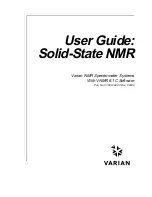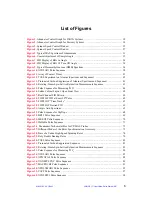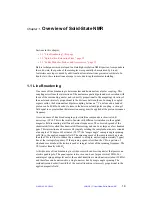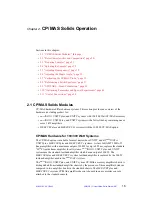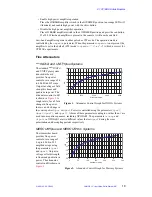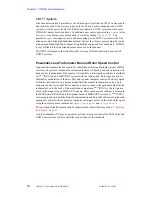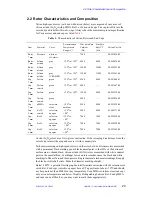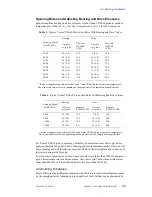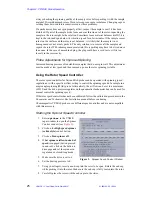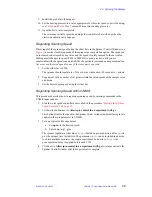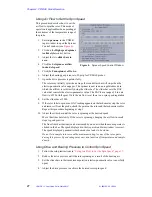
01-999162-00 C0402
VNMR 6.1C User Guide: Solid-State NMR
12
Introduction
This manual is designed to help you perform solid-state NMR experiments using a Varian
solid-state NMR module on a Varian NMR spectrometer system running VNMR version
6.1C software. The manual contains the following chapters:
•
Chapter 1, “Overview of Solid-State NMR,”
provides an short overview of solid-state
NMR, including the types of solids modules, probes, and accessories available.
•
Chapter 2, “CP/MAS Solids Operation,”
covers using the CP/MAS solids module and
related pulse sequences.
•
Chapter 3, “Wideline Solids Module Operation,”
covers using the wideline solids
module.
•
Chapter 4, “CRAMPS/Multipulse Module Operation,”
covers using the CPAMPS/
multipulse module and related pulse sequences.
•
Chapter 5, “Solid-State NMR Accessories,”
covers using the rotor synchronization,
rotor speed controller accessory, and solids variable temperature accessories.
•
Chapter 6, “Solid-State NMR Experiments,”
is a guide to pulse sequences useful for
performing solid-state NMR experiments.
Notational Conventions
The following notational conventions are used throughout all VNMR manuals:
• Typewriter-like characters identify VNMR and UNIX commands, parameters,
directories, and file names in the text of the manual. For example:
The
shutdown
command is in the
/etc
directory.
• The same type of characters show text displayed on the screen, including the text
echoed on the screen as you enter commands during a procedure. For example:
Self test completed successfully.
• Text shown between angled brackets in a syntax entry is optional. For example, if the
syntax is
seqgen
s2pul<.c>
, entering the “
.c
” suffix is optional, and typing
seqgen
s2pul.c
or
seqgen
s2pul
is functionally the same.
• Lines of text containing command syntax, examples of statements, source code, and
similar material are often too long to fit the width of the page. To show that a line of
text had to be broken to fit into the manual, the line is cut at a convenient point (such
as at a comma near the right edge of the column), a backslash (
\
) is inserted at the cut,
and the line is continued as the next line of text. This notation will be familiar to C
programmers. Note that the backslash is not part of the line and, except for C source
code, should not be typed when entering the line.
• Because pressing the Return key is required at the end of almost every command or
line of text you type on the keyboard, use of the Return key will be mentioned only in
cases where it is not used. This convention avoids repeating the instruction “press the
Return
key” throughout most of this manual.
• Text with a change bar (like this paragraph) identifies material new to VNMR 6.1C that
was not in the previous version of VNMR. Refer to the document Release Notes for a
description of new features to the software.


